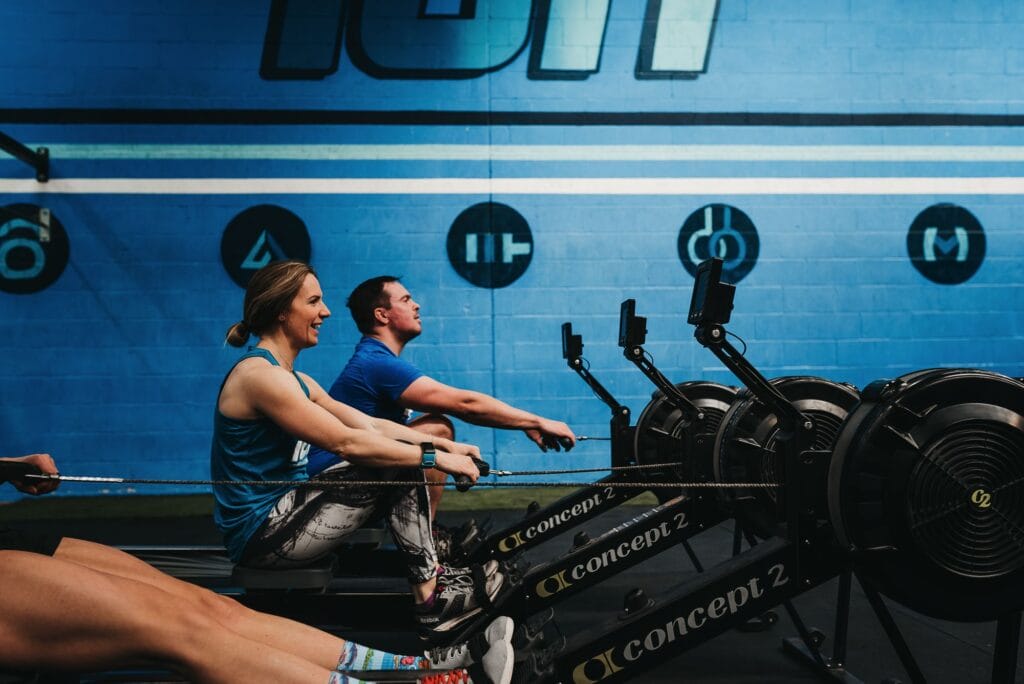Those more experienced trainers can often mistakenly assume that if they keep at a constant pace throughout a longer workout that their heart rate will remain the same. However, exercise research has shown that it is common to see the heart rate “drift” upward during moderate effort workouts, even with no increase in pace or effort – this sometimes occurs by as much as 10-20 beats per minute over a 30-minute period.
With our Triangle Conditioning classes at ION, that are largely aerobic by nature, you will often see a steady rise in heart rate across the course of the 30 mins when taking part in these workouts that see you maintaining a consistent pace throughout. Although the workouts are interval based – majority are 2:1 or 3:1 – Work:Rest Ratio – making them largely aerobic.
It’s an easy one to see as a lot of people now use their heart rate monitors for this class and see the percentages creep up across the course of the 30 minutes. Understanding the theory and rationale behind why the body responds this way during exercise will help to optimize performance.
In order to know exactly what causes this elevation of heart rate during a consistently paced workout is known as ‘Cardiovascular Drift’. Firstly, it’s important to understand a couple of key terms used within cardiovascular training –
Heart Rate – the number of heart beats per minute.
Stroke Volume – the volume of oxygenated blood pumped from the left ventricle per beat.
Cardiac Output – simply put the amount of oxygenated blood leaving the left ventricle per minute. Cardiac Output = Stroke Volume x Heart Rate
So, what happens when we starting exercising?
The body’s Nervous System is responsible for regulating physiological processes such as breathing and blood pressure and is split into the Sympathetic Nervous System and Parasympathetic Nervous System. The Parasympathetic Nervous System is responsible for managing homeostasis (keeping the body in a balanced state) whilst the Sympathetic Nervous System is responsible for causing action, such as the fight or flight response.
At the start of a workout the Sympathetic Nervous System kicks into action which causes a rapid increase in heart rate and stroke volume as the muscles of the body are working harder than at resting and require a higher demand of oxygenated blood to fuel contractions – this elevation occurs for a minute or 2 – and after this period the heart rate plateaus and is maintained at that level during moderate exercise, but as the exercise continues at a steady pace heart rate slowly starts to elevate again, known as Cardiac Drift.
Cardiac drift is the upward drift of heart rate over time, but surprisingly what happens is Stroke Volume, the amount of oxygenated blood leaving left ventricle per beat reduces – even though heart rate has increased and the resulting cardiac output (the overall amount of blood being pumped out of the left ventricle per minute) remains the same.

This is why hydration is such a key part in sports performance, sipping water throughout will mean a higher volume of plasma circulating keeping blood pressure as close to normal as possible. If water isn’t taken on regularly throughout workouts to replace the lost fluids then this reduction in stroke volume and resulting lower blood pressure inevitably leads to a far more rapid point of fatigue as your muscles will need to work anaerobically (without oxygen) – if you stay hydrated, you have greater plasma volume and oxygenated blood will be able to travel to the muscles more efficiently and as a result you will not fatigue as quickly.
So keep sipping throughout workouts – stay hydrated – perform better!



